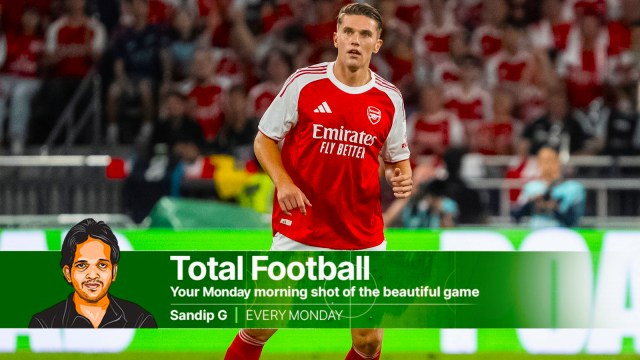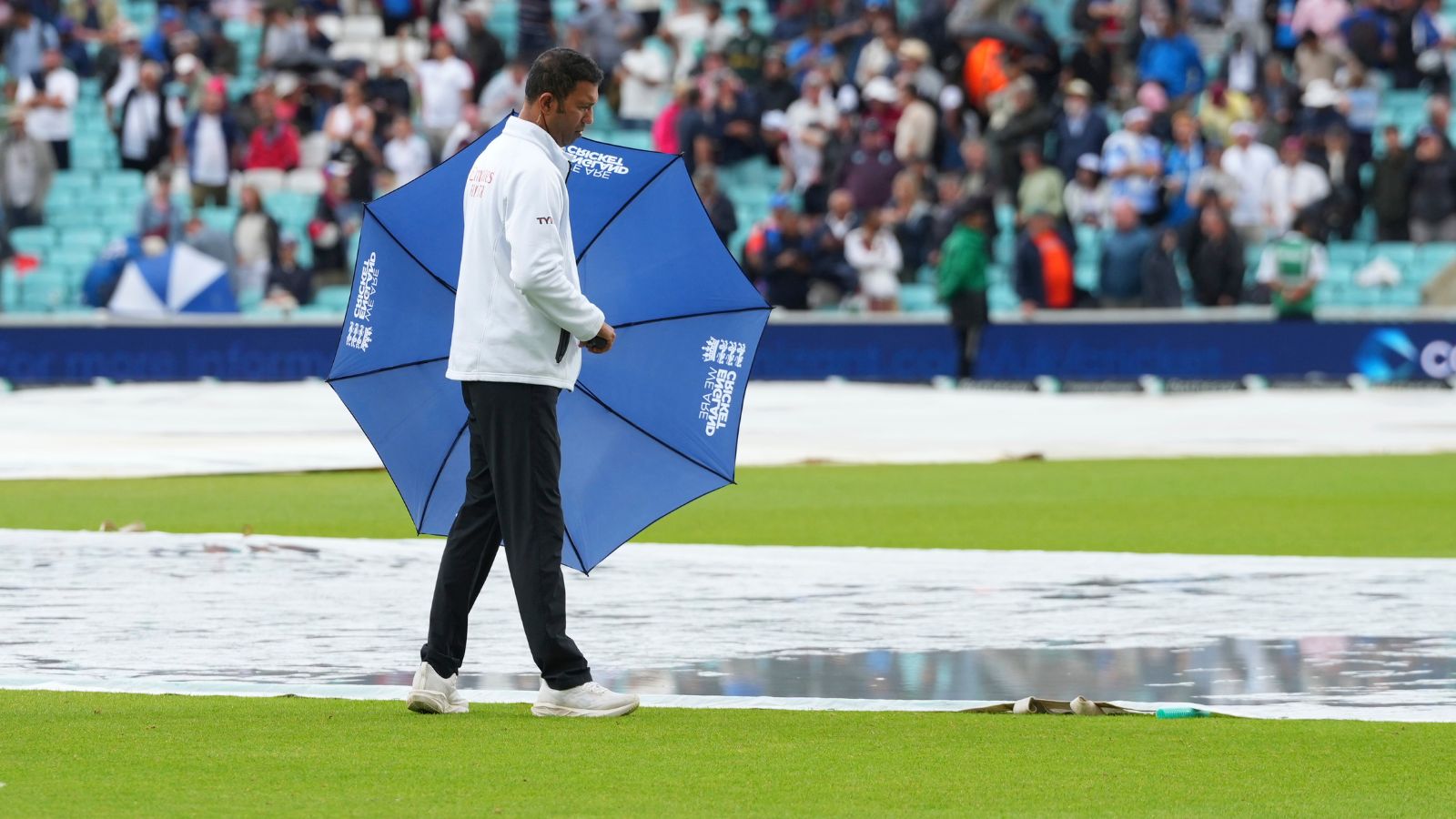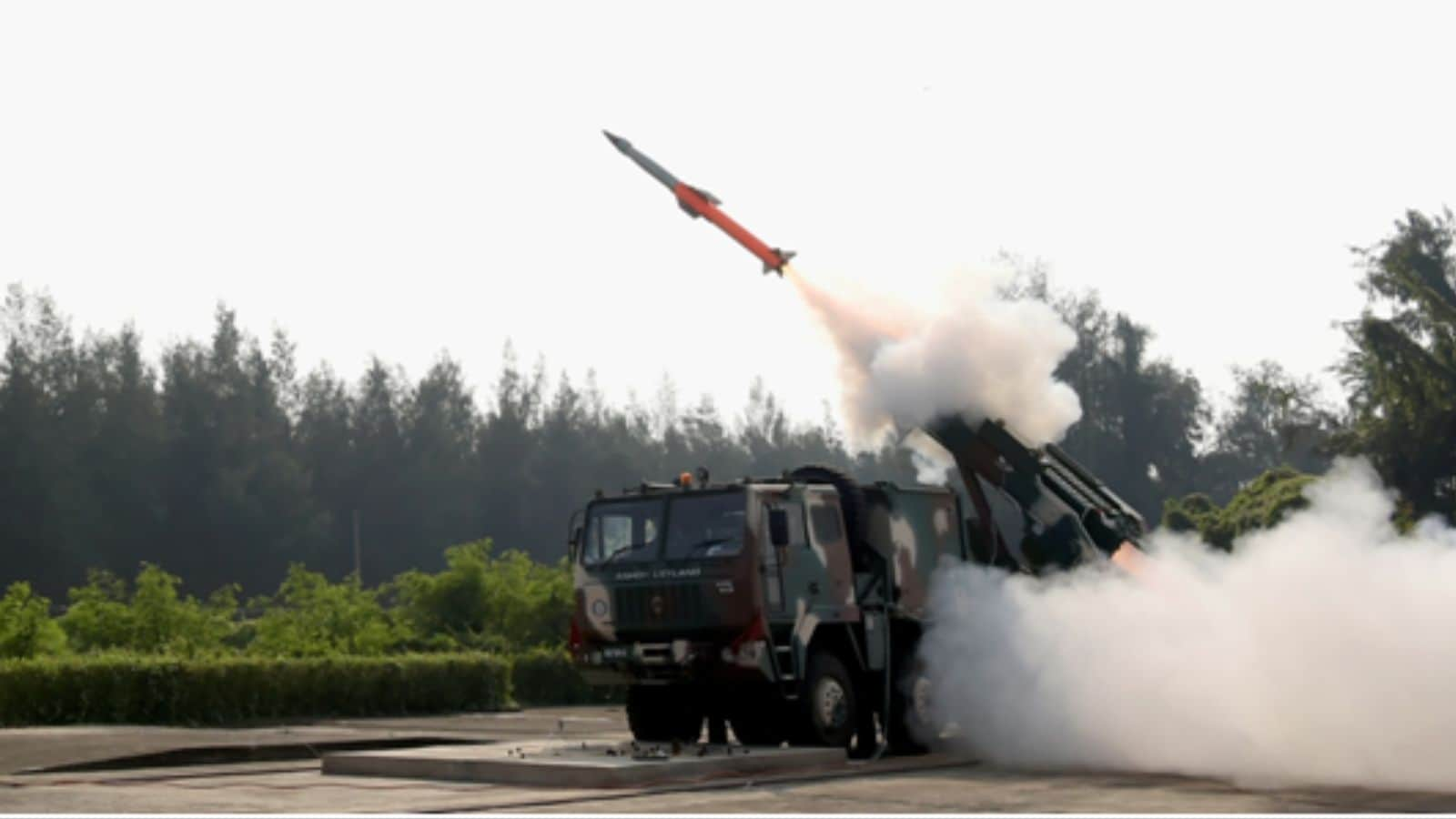ARTICLE AD BOX
 Arsenal's Viktor Gyökeres in action during a friendly football match against their Premier League rivals Tottenham Hotspur at the Hong Kong Football Festival at the Kai Tak Stadium in Hong Kong. (AP Photo)
Arsenal's Viktor Gyökeres in action during a friendly football match against their Premier League rivals Tottenham Hotspur at the Hong Kong Football Festival at the Kai Tak Stadium in Hong Kong. (AP Photo)
Big, tall men leading the line would be a familiar sight in the Premier League this season. Erling Haaland, the centre-forward colossus that kept adding centimetres well into his twenties, intimidates at six feet five inches. As does Alexander Isak—in the forthcoming weeks, the Swedish frontman could rewrite the British transfer record. Liverpool’s latest attacking recruit, Hugo Ekitike, is six feet three, Arsenal’s covetous import, Viktor Gyokeres, an inch shorter. Chelsea’s additions, Liam Delap (six feet two) and Joao Pedro (six feet one), are not short men either. The six-foot-four Benjamin Sesko, destined to land at either St James Park or Old Trafford, would embellish the space of this style of centre-forward in the league.
ARTICLE CONTINUES BELOW VIDEO
The centre-forward of such physical dimensions, contrary to popular myth, has not quite been a museum piece in the years that followed the fetishisation of the false nine and goal-scoring wingers. Some of them, like Harry Kane and Sergio Aguero, Robert Lewandowski and Cristiano Ronaldo, have thrived, but seldom in recent times has there been a concerted obsession with the tribe. English clubs have coughed up as much as 233 million pounds on such centre-forwards this transfer window. It could soar to twice the current value when the shutters are rolled down on the market in September.
The immediate demand stems from managers realising the pitfalls of building up from the back, which most big teams are committed to. The relentless pressing of the opposition suffocates them in their half, inducing errors and turnovers. Naturally, goals resulting from turnovers peaked in the last two seasons (.33 per 90 minutes in 2024-25 and .32 in 2023-24 were the highest this century, according to Opta). As have been goals that have resulted from errors (.48 last season from .22 in 2021-22).
Foresightful teams—Pep Guardiola typically was the earliest mover and shaker—devised countermeasures. Though the passing-pressing fundamentals remain, the visionary Spaniard has at times embraced a more direct and vertical approach, tore up some of his old ideals, and deployed more traditional wingers with pace and ball-carrying enterprise. He is more lenient on Haaland not dropping back too, unlike at the start of his tenure when he demanded “more than goals” from Aguero. His toughest adversary, Jurgen Klopp, too sensed the drift and shelled out 65 million pounds to secure Darwin Nunez’s signature the year before. He has all the physical attributes, but is clumsy at finishing chances.
The sensitive and intuitive managers have recognised the potential of the long ball upfield as a genuine tactic to bypass the press. But merely pinging the ball would concede possession cheaply. They need an imposing and technically proficient receptor, who could hold the ball, play with the backside towards the goal, equipped with thunderbolt strikes and poaching impulses. He can be an outlet and, by offering an aerial threat, prevent opponents from merely sitting deep. It might not necessarily evolve into a default strategy, but would be liberally resorted to.
Concurrently, teams were nullifying the false nines by using defensive mid-blocks. The blocks are so compact that the false nine is detained for space, thus reducing his influence in build-up play and chance creation. They don’t leave space—when the false nine drags the centre backs to his zone—that can be exploited by wide players cutting in.
Reinstalling the centre forward was thus a natural reaction to methods that needed revision. Football goes through periods of such resurrections. The wingers had once disappeared but only to reincarnate as inverted wingers. Well-regimented teams would still primarily play out from the back, Arsenal and PSG, for example, but would occasionally be harried by sides that marry structural discipline with aggressive pressing. In fact, a well-functioning centre forward could make playing from the back more effective.
Story continues below this ad
Long passes have not yet become a dominant theme. The number of long passes played per 90 minutes last season (94) was the lowest it has been in the past five years (101, 104, 111, 112). There has not been a significant spike in headed goals. But it could be that most teams did not have a quality centre forward, or were still apprehensive of the changing tides.
Changing profiles
In this light, it is important to understand the post-modern centre forward. Then, it is a misconception that the prototypical No 9 was just a poacher—even in the 1940s and 50s, forwards in South American and Central European clubs performed defensive duties and joined the build-up play. They were not as isolated as they are often portrayed as. Folklore has it that Austria’s Matthias Sindelar, dubbed the Paper Man, frequently dropped back and supplemented his midfielders and let the wingers occupy his space. Johan Cruyff, of course, was a modern-day specimen of defending, pressing No 9. He finished, created (both goals and space), defended and pressed. Or Ian Rush in the 1980s to a large extent. But they were outliers rather than mainstream.
The profiles kept changing through times, teams and tactics; functions were defined and redefined. The contemporary avatar should perform the functions of both the classical centre-forward as well as the false nine. He could be ready like the old tribe to receive the long ball as well as be adept at navigating through congested spaces, or engage and distract either the No 6 or one of the centre-backs. The perfect sample is Alexander Isak, of Newcastle United at the time of writing, but could be somewhere else by the end of the transfer window.
Like all the in-demand entities in an era, supply cannot match the demand. The front-three fixation pushed clubs to invest more on wingers and midfield technicians. Drought seized even the fabled centre-forward nurseries, Argentina and Brazil. So naturally, centre forwards became super-expensive. But it is not so much a flashpoint of centre forwards making a comeback, as a case of them becoming glamorous again.



.png)
.png)
.png)


























 English (US) ·
English (US) ·